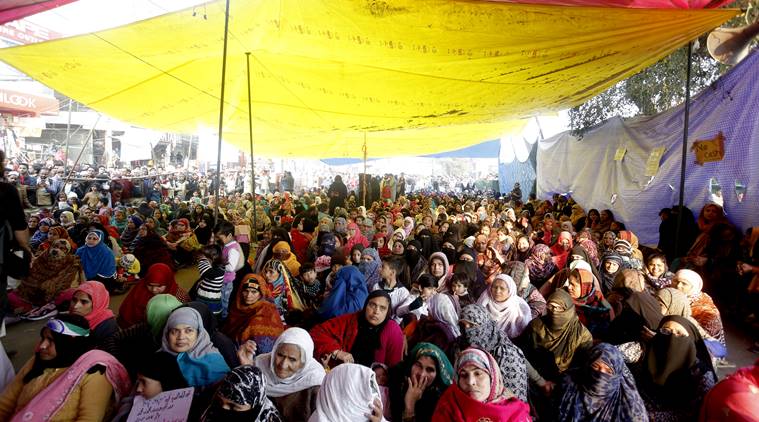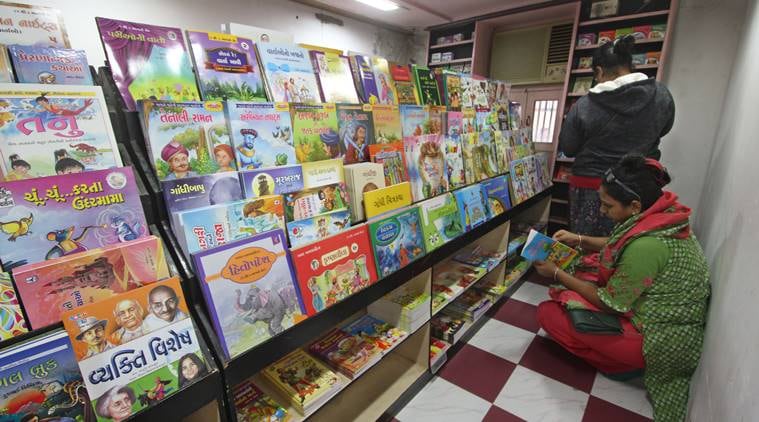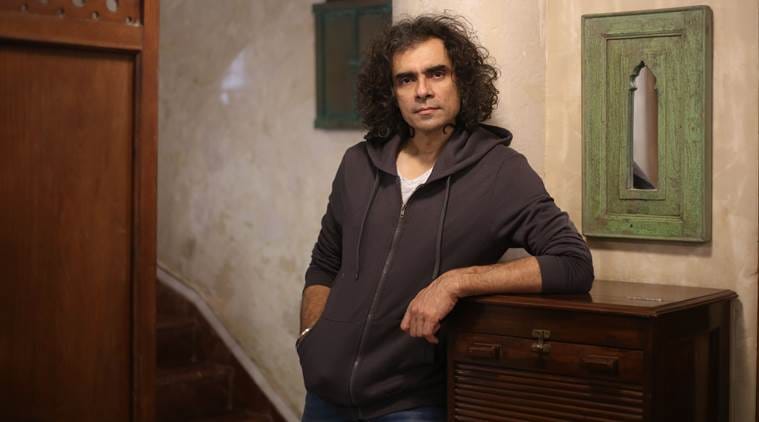Latest Comment
Post Comment
Read Comments
 Complex plots, crisp writing, choreographed combats, original music and seasoned performances. Are video games the new films?
Complex plots, crisp writing, choreographed combats, original music and seasoned performances. Are video games the new films?
With Hollywood lending its voice, are video games the new films?
Even Superman plays video games. Henry Cavill, the last person to don the red cape, famously ignored the casting confirmation call from director Zack Snyder because he was busy playing World of Warcraft.
After an unremarkable stint as the Man of Steel, it was a video game that presented Cavill with a chance to bring another iconic character to the screen. Enamoured of The Witcher 3 — the fantasy role-playing game that pits otherworldly beasts against a hunter — and the performance of voice actor Doug Cockle as Geralt of Rivia, the eponymous witcher, Cavill started angling for the part in the TV adaptation. In December, Netflix released The Witcher to mixed reviews from critics. Cavill’s Geralt, however, managed to floor the tougher bunch — hardcore gamers ready to shred the Brit’s interpretation of a beloved character.
Who is an anti-national?
 Words Make The Man: Victor Klemperer (Source: Wikimedia Commons)
Words Make The Man: Victor Klemperer (Source: Wikimedia Commons)
Last week, Minister of State for Finance Anurag Thakur led a chant at an election meeting in Delhi with the prompt: “Desh ke gaddaron ko…” (“Traitors to the nation…”) And the mob was happy to complete the slogan: “…goli maaron saalon ko.” (“…should be shot.”) We shall now witness the familiar waltz that parties perform to distance themselves from those who speak their mind too frankly, but given the volume of violent speech that’s been in the air already, the minister’s exhortation is not a novelty. However, the crowd’s response is interesting, indicating that the idea of exterminating certain classes of Indian citizens has been normalised.
WhatsApp Uncle is lost looking for citizenship papers
 Voices of dissent: Protesters at Shaheen Bagh, Delhi (Photo: Amit Mehra)
Voices of dissent: Protesters at Shaheen Bagh, Delhi (Photo: Amit Mehra)
Aaj main phansa hoon/ Ek duvidha ke do seenghon mein/Desh prem mein lipta hoon, par kaagaz ki khoj mein khud ko kho baitha hoon/ Jis aurat ka karne chala thha uddhaar, aaj sochta hoon/Kya wahi dikhaegi bharat mata ko aadar karne ka marg?
Bachchon, my family, u all must be thinking this is poem from some young anti-national fellow or something… or amazing shabd of Ghalib or Dinkar ji… BUT U WILL NOT BELIEVE…. ALL BEAUTIFUL WORDS ABOVE BELONG TO UR DAADU’S BEAUTIFUL MIND!!!!!! Yes my family… my duvidha is so gr8 that ONLY KAVITA CAN EXPRESS MY KARUNA!!!!
Legendary Gujarati bookstore Lokmilap shuts shop after nearly seven decades
 Independent bookstore Lokmilap in Bhavnagar, Gujarat. (Photo: Javed Raja)
Independent bookstore Lokmilap in Bhavnagar, Gujarat. (Photo: Javed Raja)
A bookstore a little younger than the Republic, one that made notoriously penny-wise Gujaratis line up to buy books, and one that became a cultural landmark in Bhavnagar, Saurashtra – Lokmilap was all that and more, till it shut shop last Sunday, exactly 66 years after it began in Mumbai.
The store, as well as the publishing house by the same name, was set up by Mahendrabhai Meghani, 96, the eldest son of a legendary Gujarati man of letters. The late Jhaverchand Meghani was a poet, social reformer and writer, who was conferred the title of Rashtriya Shayar (national poet) by Mahatma Gandhi.
Hafeez Contractor on why Indians don’t deserve good architecture
 Architect Hafeez Contractor at his office. (Express photo by Prashant Nadkar)
Architect Hafeez Contractor at his office. (Express photo by Prashant Nadkar)
Mumbai’s skyline stands dotted with tall towers, like arrows in the sky. It all began with architect Hafeez Contractor, 70, one of the most recognisable name in the galaxy of Indian designers, who started the trend. Contractor, who speaks in metaphors and who has done the math to house 22 million Mumbaikars is the subject of a recent book, Becoming Hafeez Contractor: The Making of an Architect (HarperCollins, 2019), written by urban designer-architect Harshad Bhatia. As we enter Contractor’s well-lit office in Mumbai, his work space is unhindered by doors or partitions. It is just as Contractor, whom Bhatia calls the “catalyst architect”, would like it to be — open and accessible.
Manu S Pillai: ‘I am drawn to the untold stories’
 I am drawn to stories that are not regularly told, the ones that are neglected, says author Manu S Pillai. (Photo: DC Books)
I am drawn to stories that are not regularly told, the ones that are neglected, says author Manu S Pillai. (Photo: DC Books)
At the age of 26, Manu S Pillai burst onto the literary scene with The Ivory Throne (2016) a 700-page tome about Sethu Lakshmi Bayi, the forgotten queen of Travancore who ruled the kingdom between 1924 and 1931. The book’s layered and rich anecdotal narrative won him the prestigious Sahitya Akademi Yuva Puraskar in 2017. Since then, Pillai has added two more books to his name — Rebel Sultans (2018) and The Courtesan, the Mahatma and the Italian Brahmin (2019). On the sidelines of the Kerala Literature Festival in Kozhikode, Pillai spoke about writing, the importance of talking to all sides and the rare unity of the anti-CAA protests.
Why photographer Chirodeep Chaudhuri is fascinated by Mumbai’s public clocks
 It’s time: Bhagat Bhuvan, Vile Parle (Photos: Chirodeep Chaudhuri)
It’s time: Bhagat Bhuvan, Vile Parle (Photos: Chirodeep Chaudhuri)
Public clocks have caught photographer Chirodeep Chaudhuri’s eye for a while now. During his research in Mumbai, about 15 years ago, he came across an old home in Vile Parle, crowned by an old German clock. The owners had a shop at Abdul Rehman Street that sold time pieces. In the 1950s, the clock had been installed by men flown in from Germany. Since then, the weekly ritual at Bhagat Bhuvan was for the head of the family, Janak Bhagat, to wind the clock on Sunday morning. The clock ran for about a week, before the process was repeated.
Similar stories of how a city in a hurry finds the time for its public clocks are a part of Chaudhuri’s exhibition, “Seeing Time: Public Clocks of Bombay”, on at Max Mueller Bhavan in Mumbai till February 20.
Why Guru Nanak stayed in Leh
 Outside Leh, a gurdwara to the founder of Sikhism, called Nanak Lama by the locals. (Source: Divya A)
Outside Leh, a gurdwara to the founder of Sikhism, called Nanak Lama by the locals. (Source: Divya A)
Hot tea, with savouries, is always welcome when travelling through the picturesquely difficult terrain of Ladakh. On the road from Leh towards the popular touristy Magnetic Hill and Indus-Zanskar river confluence on a recent trip, an unassuming gurdwara caught our eye, perched atop a small hill. No one had told us about it. Parked outside were a tourist bus, some cars and many, many bikes.
“How big is the Sikh community in Ladakh?” “Do tourists know that there is a gurdwara in Leh?” “What’s the backstory?” We hurled questions at our guide. “It’s the Nanak Lama’s place. On his way to Tibet in the 16th century, he stayed at this place for some days,” he says.
Why Paris remains a tourist favourite
 Paris, Je t’aime: What is it about the French capital that tugs at your heartstrings and makes you long to return? (Photos: Satarupa Paul)
Paris, Je t’aime: What is it about the French capital that tugs at your heartstrings and makes you long to return? (Photos: Satarupa Paul)
Summer had surreptitiously morphed into fall, the September sun still a warm tingle on the skin. Along the length of the Champs-Élysées — often acknowledged as “the most beautiful avenue in the world” — rows of meticulously pruned London plane trees had begun to turn a luminous shade of copper and gold. On the terraces of the numerous restaurants and cafés that line its massive sidewalks, people idled over rounds of coffee and conversation, while others watched the world go by with a glass of rosé in hand. On one such terrace of a boulangerie, I sat tucking into the buttery goodness of a fresh-out-of-the-oven croissant and a luscious café crème. In the foreground, stood the Arc de Triomphe at the centre of Place Charles de Gaulle, its impressive façade inscribed with the names of the heroes of the French Revolution and Napoleonic Wars. At the next table, an artist sat translating the scene around him on to paper.
Why the Knuckles Mountain Range is one of Sri Lanka’s most difficult hikes
 One of the most difficult hikes on the Sri Lankan island, the Dumbara Kanduvetiya is a reminder of nature’s versatility. (Source: Adityavikram More)
One of the most difficult hikes on the Sri Lankan island, the Dumbara Kanduvetiya is a reminder of nature’s versatility. (Source: Adityavikram More)
They say the heart is one of the strongest muscles in the body. Yet, why does it feel the weakest at times? It leaps, it melts, it breaks, it soars, it sinks, it skips a beat. Sometimes, it is twisted like a trail in the hills. And when you visit the Knuckles, it just curls up and lays on the grass. This is exactly what I needed after a discussion on social media went shrill, with family friends targeting my family rather than the issue, reflecting the zeitgeist. I needed to climb high to understand how small my troubles were. The cure for my condition was well-prescribed. Knuckles, the fist-shaped mountain range in central Sri Lanka, can totally knock you out of your charged, over-civilised state!
Why the rare white carrot halwa remains an Old Delhi favourite
 Sheeren Bhawan’s other halwas are as popular, such as those based on traditional remedies prescribed by hakims.
Sheeren Bhawan’s other halwas are as popular, such as those based on traditional remedies prescribed by hakims.
Near JAMA Masjid, in Bazaar Chitli Qabar, is an Old Delhi shop selling an unusual halwa. Sheeren Bhawan, which is best known for the halwas it makes and sells only in winter, has on its menu a white carrot halwa. “You won’t find this elsewhere. People ask us if we have used some colour with red carrots, but we don’t. The white is less sweeter than the red, and that’s probably why it is so popular with people,” says its third-generation owner, Alauddin. His uncle, Shijauddin, had come across four farmers in Uttar Pradesh, who grow these white carrots. “Only two of them are alive today, and they have not shared the seeds with anyone,” he adds. The winter season at the shop, which opens at 6 am and closes at midnight, starts off with lal gajar ka halwa, as the white carrots arrive a little late by mid-December, but then safed gajar ka halwa is served till February, which is usually when the stock of white carrots is over.
What do animals’ tails say about them?
 Some animals — like the hippopotamus — really have fun with their tails and every self-respecting toddler should want to emulate them.
Some animals — like the hippopotamus — really have fun with their tails and every self-respecting toddler should want to emulate them.
We pride ourselves on being at the top of the evolutionary scale of life (even if much of our behaviour belies this). One sign of this is that we — along with our closest relatives, the apes — do not have tails. To my mind, it’s a huge pity — most of our close cousins, the monkeys, have tails and, boy, do they have fun with them!
“New world” primates that are found in central and South America even use their tails as a sort of fifth limb, invaluable for climbing trees and hanging upside down from them. Even our so-called “old world” monkeys, like langurs and macaques, use their tails in any number of acrobatic ways while up in the canopy. The langurs’ enormously long tails help them to balance when leaping from branch to branch and baby monkeys have a ball pulling each others (and the occasional glowering adult’s) tails while playing. And when everyone needs to calm down, they sit down quietly and groom each other’s tails, ridding them of parasites. Dada macaques display their authority by swaggering along with their tails held right up, as if leading a flag march.
Imtiaz Ali: ‘My idea of love has constantly evolved’
 Director Imtiaz Ali/ Express Photo by Amit Chakravarty
Director Imtiaz Ali/ Express Photo by Amit Chakravarty
A decade after you made the first Love Aaj Kal (2009), you are back with another film with the same title.
It’s not a sequel or a continuation. It’s a fresh story with new characters. The concept, of course, is the same. Two stories, set in different eras, interact with each other. That’s the reason I was very clear about calling my latest movie Love Aaj Kal. This story came in my mind some years ago, when I was talking to my daughter (Ida) about the romantic days of my life. Years later, it had formed a certain narrative. So, I decided to go for it. One love story in the film is set in Delhi, now, and the other story takes place in the 1990s. These two are very different from each other. Yet, the essence of what you are looking for in a lover or a romantic relationship is the same.


